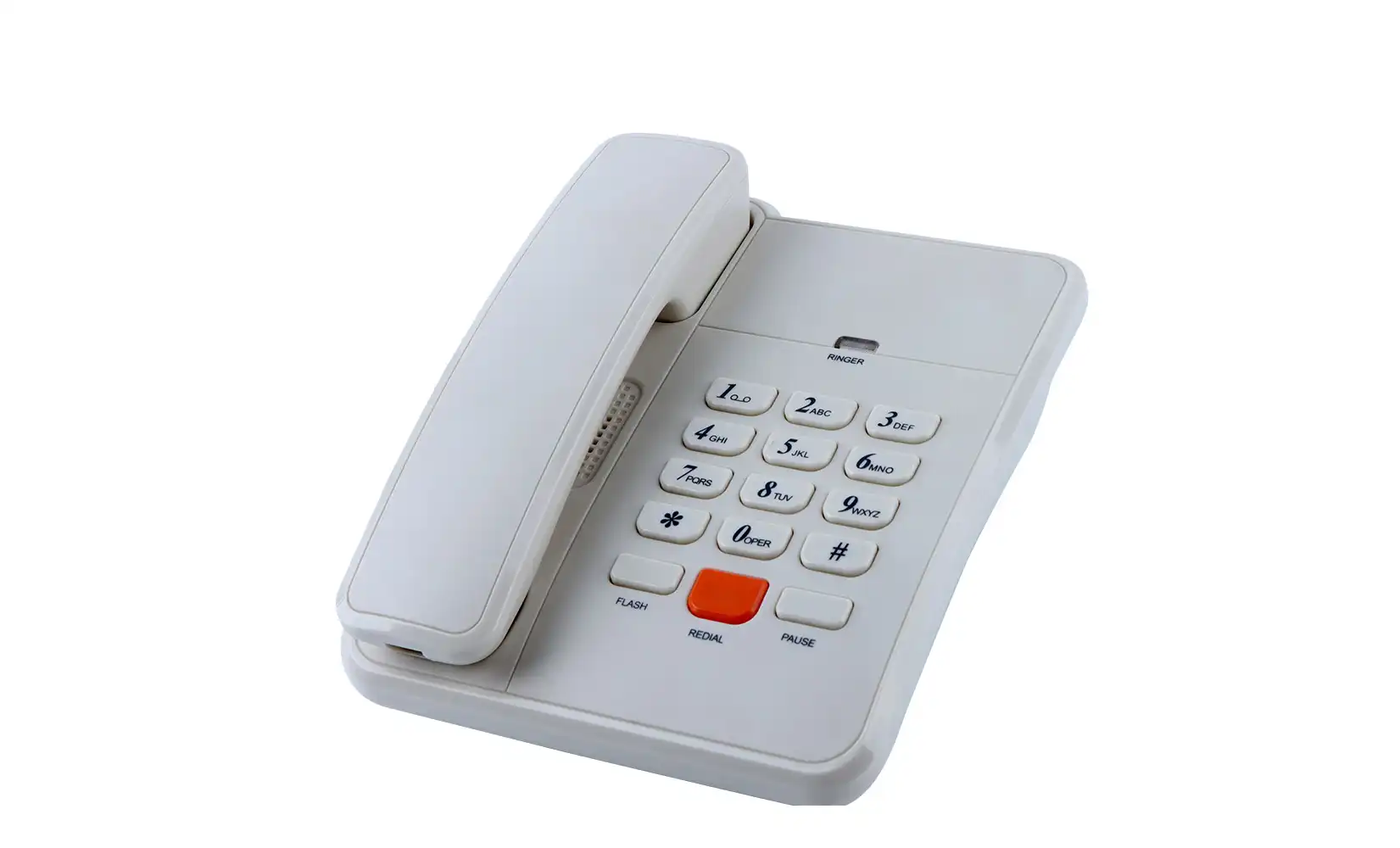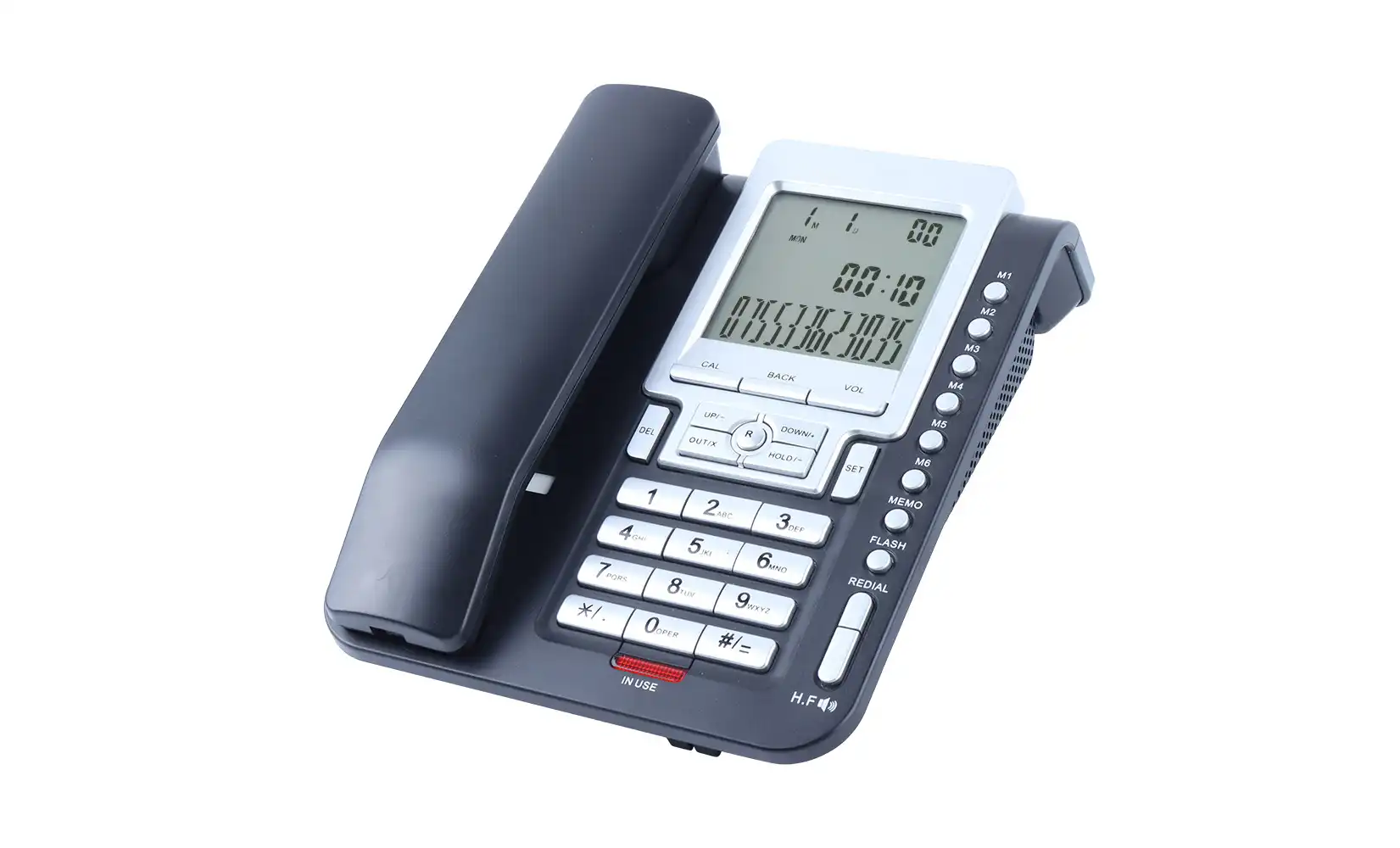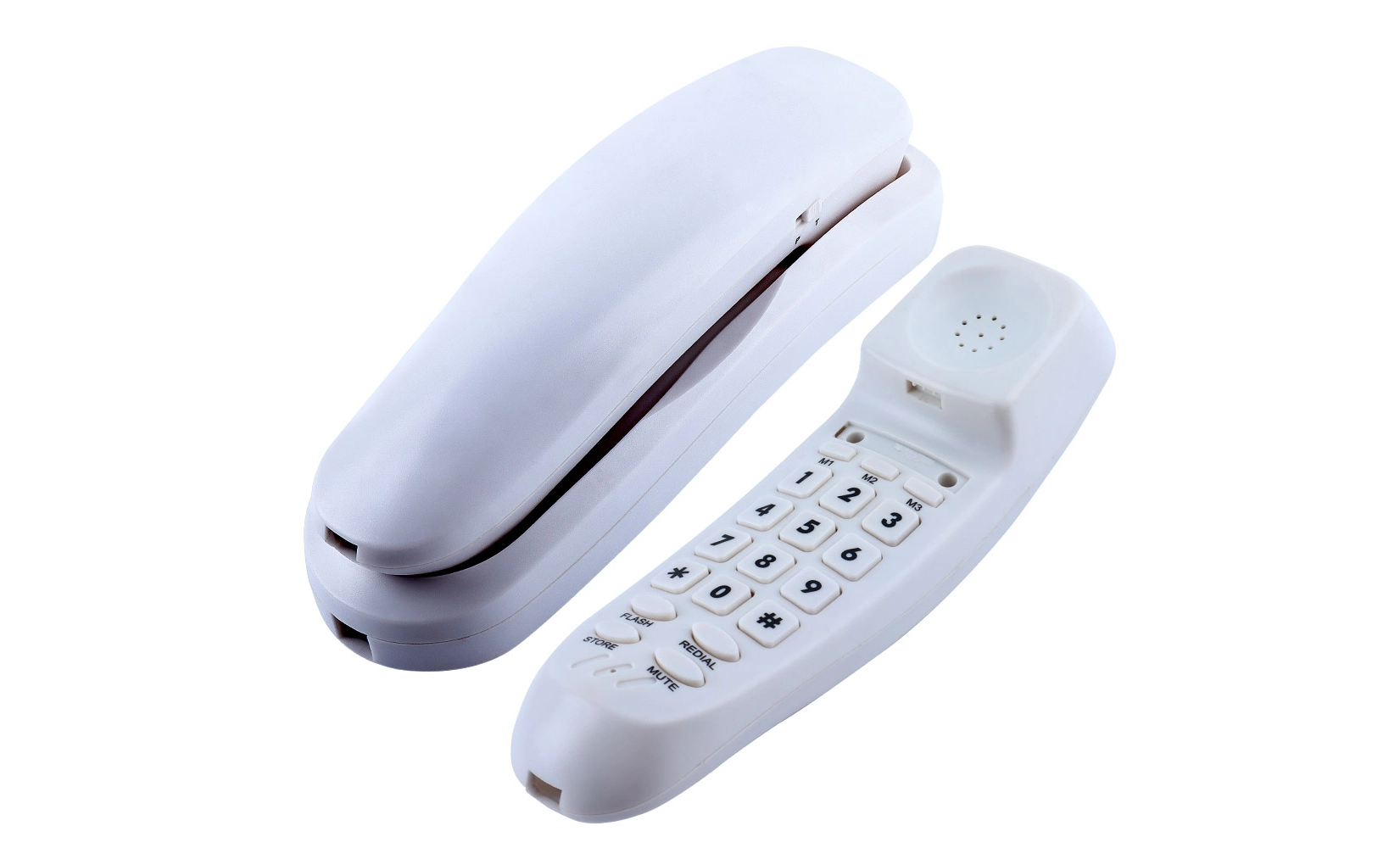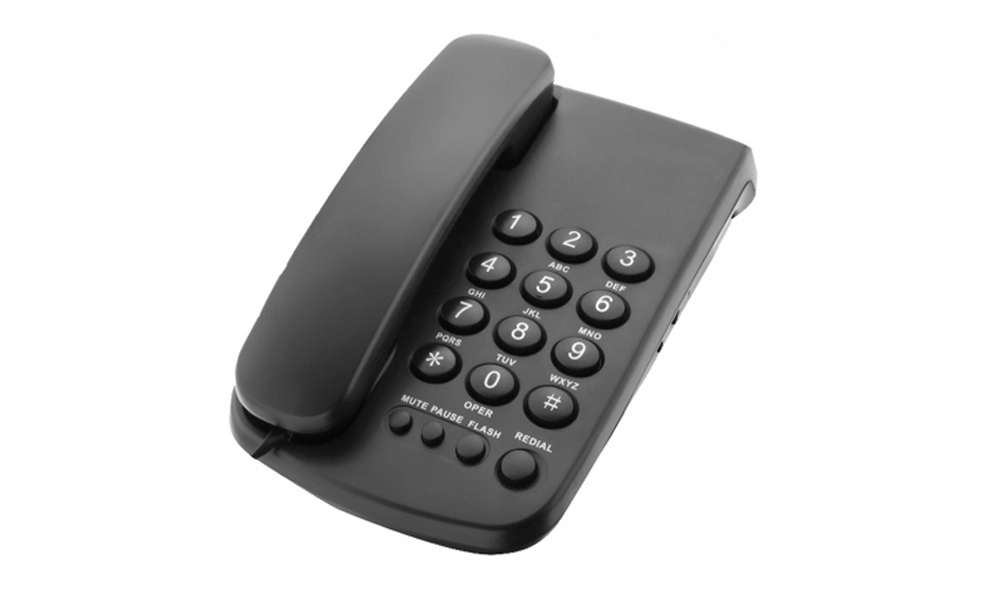The Evolution of Wired Office Phone Technology
The journey of wired office phones began with the invention of the telephone by Alexander Graham Bell in 1876. Since then, these devices have undergone numerous transformations, adapting to the changing needs of businesses and technological advancements. Early office phones were simple devices that could only make and receive calls. However, as technology progressed, new features were added to enhance functionality and improve communication efficiency.
In the 1960s and 1970s, the introduction of touch-tone dialing revolutionized office communication. This technology replaced the rotary dial system, allowing for faster and more accurate dialing. The advent of digital technology in the 1980s brought about another significant change in wired office phone systems. Digital phones offered improved sound quality, more features, and greater flexibility in terms of system configuration.
Key Technological Advancements in Wired Office Phones
Several technological advancements have shaped the evolution of wired office phones:
- PBX Systems: Private Branch Exchange systems allowed businesses to manage multiple phone lines and extensions internally, reducing the need for external phone lines.
- VoIP Technology: Voice over Internet Protocol technology enabled voice communication over the internet, offering cost savings and increased flexibility.
- Unified Communications: This technology integrates various communication tools, including voice calls, video conferencing, and instant messaging, into a single platform.
- Advanced Call Management: Features like call routing, auto-attendant, and voicemail-to-email have significantly improved call handling efficiency in office environments.
These advancements have transformed wired office phones from simple communication devices into sophisticated tools that can significantly enhance productivity and streamline business operations.
The Inner Workings of a Wired Office Phone
To truly understand the technology behind wired office phones, it's essential to delve into their inner workings. At a fundamental level, these devices operate on the principle of converting sound waves into electrical signals and vice versa. This process involves several key components working in harmony.
Key Components of a Wired Office Phone
The main components of a wired office phone include:
- Microphone: Converts sound waves into electrical signals.
- Speaker: Converts electrical signals back into sound waves.
- Keypad: Allows users to input phone numbers and access various features.
- Circuit Board: The brain of the phone, processing signals and controlling various functions.
- Ringer: Alerts users to incoming calls.
- Display: Shows caller information, time, and other relevant data.
When a call is made, the microphone captures the speaker's voice and converts it into electrical signals. These signals are then transmitted through the phone line to the recipient's phone, where they are converted back into sound waves by the speaker. This process happens almost instantaneously, allowing for real-time communication.
Signal Transmission in Wired Office Phones
The transmission of signals in wired office phones is a complex process that involves several steps:
- Analog-to-Digital Conversion: Modern phone systems convert analog voice signals into digital data for transmission.
- Data Compression: The digital data is compressed to optimize transmission efficiency.
- Packet Switching: In digital systems, the compressed data is divided into packets for transmission.
- Error Correction: Systems employ error correction techniques to ensure data integrity during transmission.
- Digital-to-Analog Conversion: At the receiving end, the digital data is converted back into analog signals for the listener to hear.
This sophisticated process ensures clear, reliable communication, even over long distances. The technology behind wired office phones continues to evolve, with ongoing improvements in sound quality, energy efficiency, and integration with other communication systems.
 The Future of Wired Office Phone Technology
The Future of Wired Office Phone Technology
While wireless and mobile technologies have gained significant traction in recent years, wired office phones continue to play a crucial role in business communication. The future of wired office phone technology is likely to be characterized by increased integration with other communication systems and enhanced functionality.
Emerging Trends in Wired Office Phone Technology
Several trends are shaping the future of wired office phone technology:
- AI Integration: Artificial Intelligence is being incorporated into office phone systems to improve call routing, automate scheduling, and enhance voice recognition.
- Enhanced Security: As cyber threats evolve, wired office phone systems are being equipped with advanced encryption and security features to protect sensitive communications.
- Seamless Integration: Future wired office phones are likely to offer seamless integration with other business tools and applications, such as CRM systems and project management software.
- Improved Analytics: Advanced analytics capabilities will allow businesses to gain valuable insights from their communication data, helping to optimize processes and improve customer service.
These advancements are set to make wired office phones more versatile and valuable than ever before. While the basic principles of voice transmission remain the same, the additional features and capabilities will continue to evolve, ensuring that wired office phones remain a staple in business communication for years to come.
The Role of Wired Office Phones in Modern Business Communication
Despite the rise of mobile and digital communication technologies, wired office phones continue to play a vital role in modern business communication. They offer several advantages that make them indispensable in many office environments:
- Reliability: Wired connections typically offer more stable and consistent call quality compared to wireless alternatives.
- Security: Physical wire connections are generally more secure and less susceptible to interception than wireless transmissions.
- Power Independence: Unlike mobile devices, wired office phones don't rely on batteries, ensuring continuous availability even during power outages.
- Cost-Effectiveness: For businesses with high call volumes, wired office phone systems can be more cost-effective in the long run compared to mobile plans.
As technology continues to advance, we can expect to see further innovations in wired office phone systems that will enhance their capabilities and cement their place in the modern business landscape.
Conclusion
The technology behind basic wired office phones is a testament to human ingenuity and the continuous evolution of communication systems. From their humble beginnings as simple voice transmission devices, wired office phones have transformed into sophisticated communication tools that integrate seamlessly with modern business operations. Understanding the inner workings of these devices and their ongoing technological advancements can help businesses make informed decisions about their communication infrastructure.
As we look to the future, it's clear that wired office phones will continue to play a significant role in business communication. The integration of AI, enhanced security features, and improved analytics capabilities will further increase their value and versatility. While wireless and mobile technologies continue to advance, the reliability, security, and cost-effectiveness of wired office phones ensure their relevance in the modern business landscape.
By staying informed about the latest developments in wired office phone technology, businesses can leverage these tools to enhance their communication capabilities, improve productivity, and ultimately drive success in an increasingly connected world.
FAQ
Are wired office phones becoming obsolete?
No, wired office phones are not becoming obsolete. They continue to offer advantages in reliability, security, and cost-effectiveness for many businesses.
Can wired office phones integrate with modern communication systems?
Yes, modern wired office phones can integrate with various communication systems, including VoIP and unified communications platforms.
How do wired office phones compare to mobile phones in terms of call quality?
Wired office phones generally offer more consistent call quality due to their stable, physical connection, while mobile phones can be subject to signal variations.
Understanding the Technology Behind Basic Wired Office Phones | CHEETA
At CHEETA, we leverage our 18+ years of expertise in analog telephone manufacturing to create cutting-edge wired office phone solutions. Our state-of-the-art 1,200㎡ factory, equipped with 100+ skilled workers and 10 senior engineers, produces 1,000 high-quality analog units daily. We prioritize innovation through weekly team discussions and global case studies, ensuring our products meet evolving customer needs. Our commitment to quality is evident in our rigorous 11-step inspection process and compliance with CE, RoHS, FCC, and UN38.3 regulations. For businesses seeking reliable, customizable wired office phone solutions from a trusted manufacturer, contact us at allen@cheeta.com.cn.

References
1. Smith, J. (2021). "The Evolution of Office Communication Technology". Telecommunications Journal, 45(3), 112-125.
2. Johnson, A. & Brown, M. (2020). "Wired vs. Wireless: A Comparative Study of Office Phone Systems". Business Communication Quarterly, 33(2), 78-92.
3. Lee, S. et al. (2022). "Integrating AI in Modern Office Phone Systems". IEEE Communications Magazine, 60(5), 45-51.
4. Wilson, R. (2019). "The Future of Wired Communication in Business". Corporate Technology Review, 28(4), 201-215.
5. Garcia, M. & Patel, K. (2023). "Security Advancements in Wired Office Phone Technology". Journal of Business Telecommunications, 41(1), 33-47.
 Wired office phones
Wired office phones




